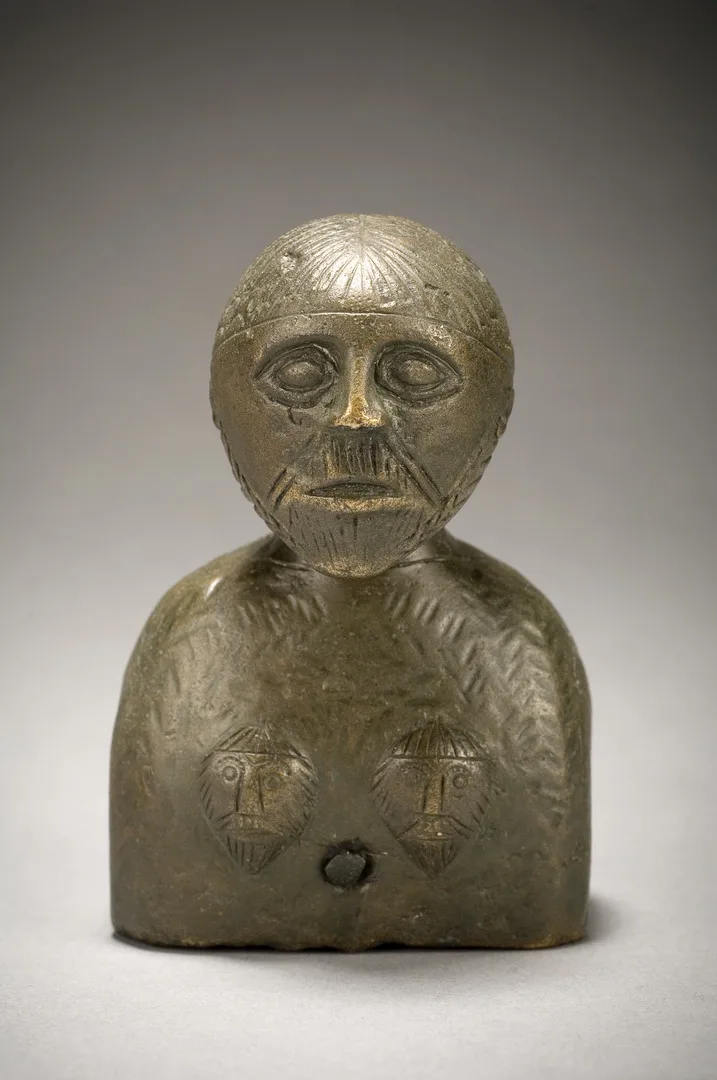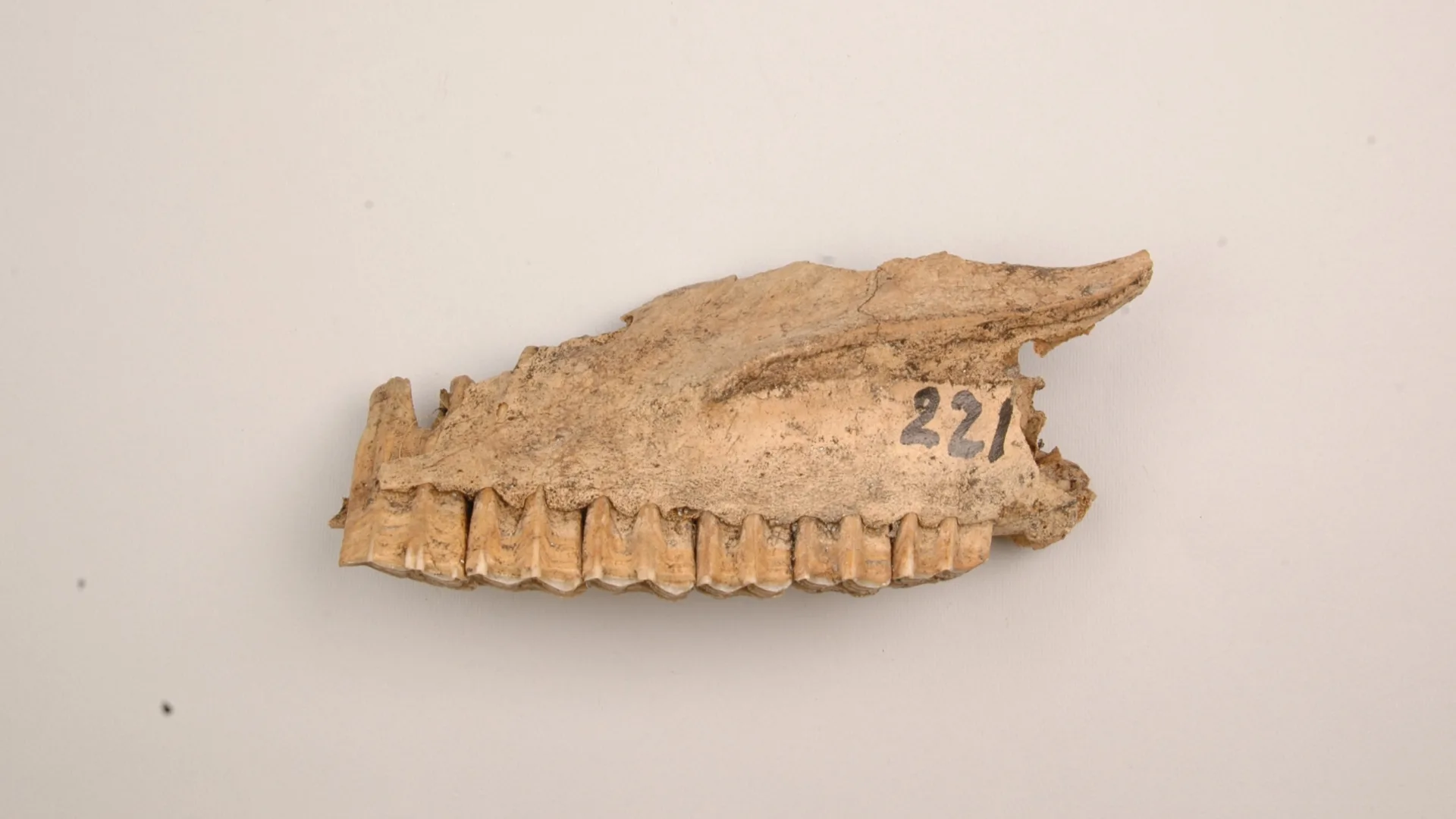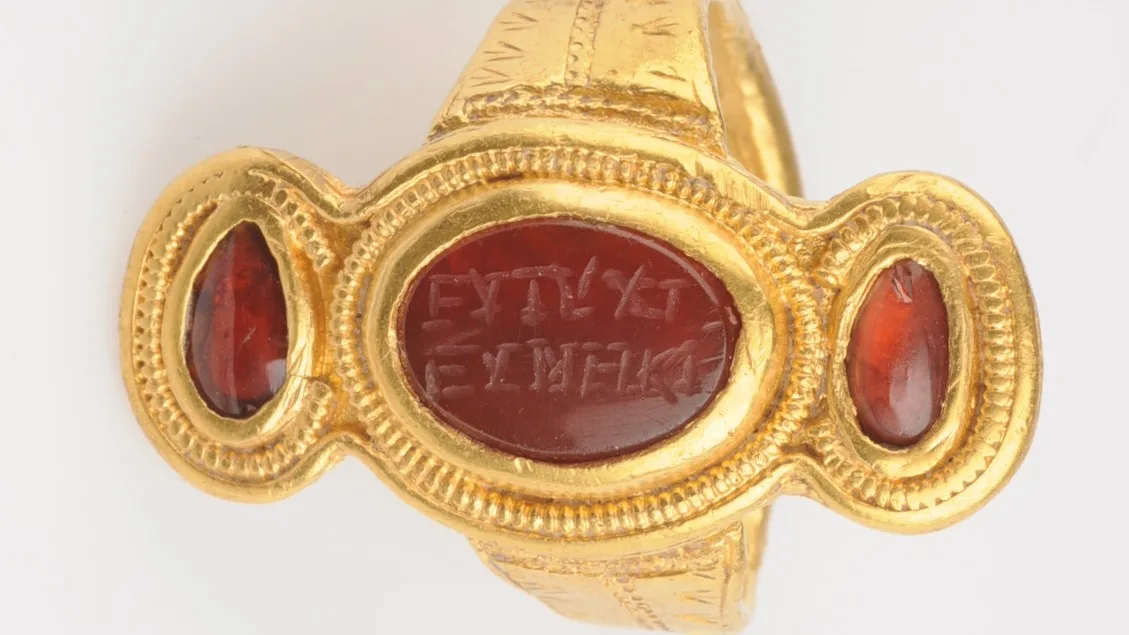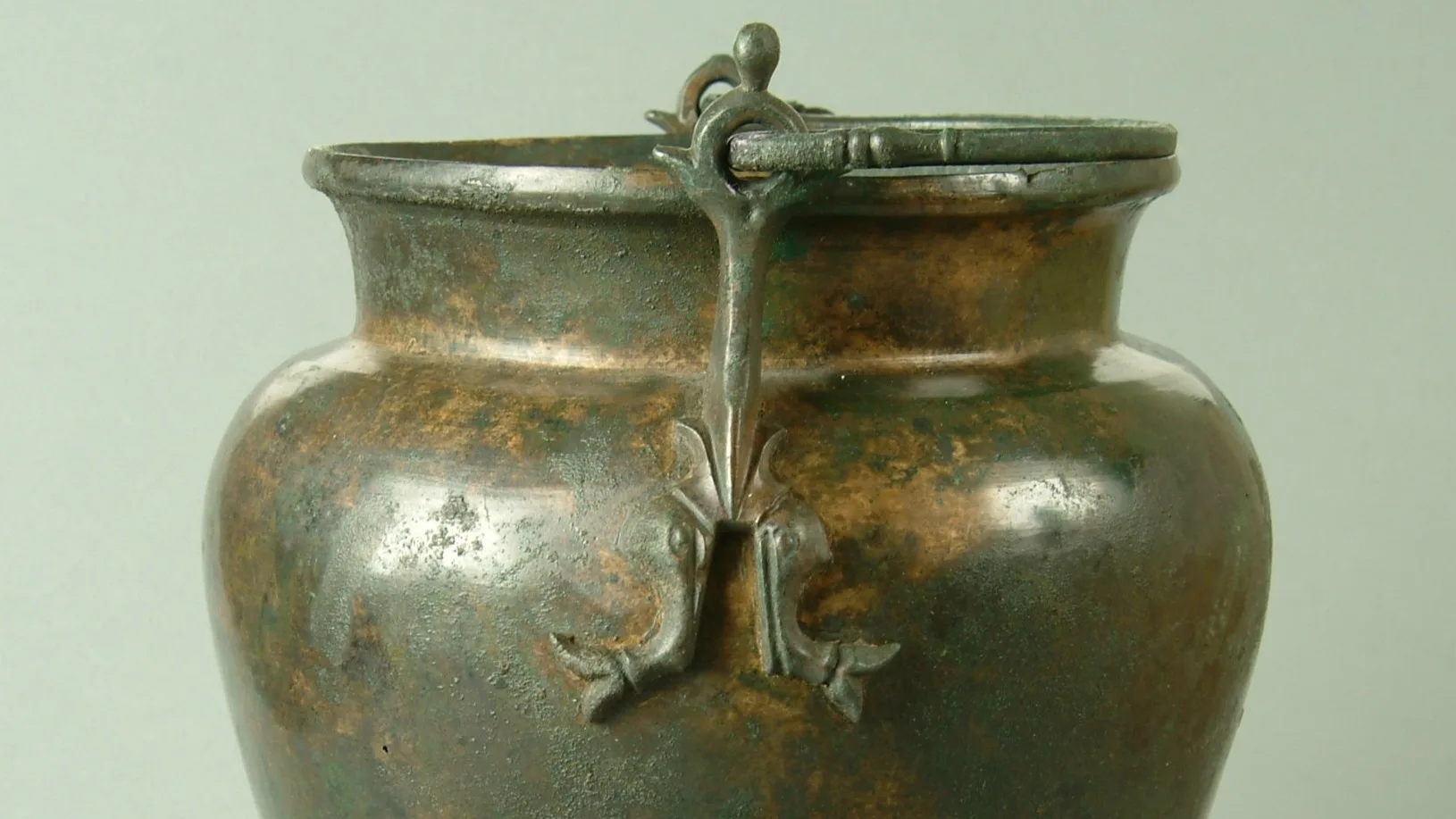The enigmatic figure from Alböke
Bronze Age
1700 BC – 500 BC
Iron Age
500 BC – AD 1100
Viking Age
AD 800 – AD 1100

The figure may represent an Öland native who once served in the Roman army. The decoration suggests it was made during the late Roman Iron Age (AD 1–375) or Migration Period (AD 375–550), a time of great transformation in European history.

The man from Alböke
On view at Historiska museet in the exhibition Guldrummet
At the beginning of this period, the Roman Empire was still a dominant superpower. But by its end, Rome had lost much of its authority, and new kingdoms and states had emerged. Even those living in the Nordic regions were affected by these continental shifts.
Roman goods and customs were spread far beyond the Empire’s borders through peaceful trade. And many people from the North came into direct contact with Roman culture through military service. It is likely in this context that the figure from Alböke should be understood.
Not depictions of a deity
Statuettes of this type are rare in Scandinavia. However, there is a small group of similar figures, some also from Öland, that show clear Roman influence.
The man from Alböke is, by all indications, not a god-figure. Instead, his appearance closely resembles the style of funerary monuments erected in the Roman provinces, where the deceased is often depicted frontally, typically as a bust ending just below the chest.
This small figurine may therefore be a miniature version of a Roman grave monument. That would explain the man's somewhat “classical” appearance. At the time, it was unusual to depict men with beards or sideburns in the Nordic regions, but not in the Roman world, where imperial figures like Emperor Marcus Aurelius often wore full beards.
A Roman soldier
Viewed in this light, even the unusual decoration on the man’s torso may begin to make sense. The linear patterning that covers much of his upper body could represent a type of chainmail armour worn by Roman auxiliary soldiers. The two face-like emblems are likely stylised depictions of what the Romans called phalerae, large, round decorations of hammered metal (often featuring Medusa heads or similar motifs), awarded for valour and worn over the uniform.
Perhaps, then, the enigmatic man from Alböke is no mystery at all. He may well have been a Roman soldier who returned home to Öland after years of service in the Roman army. Once back, he may have commissioned this small bust to ensure he would be remembered.




